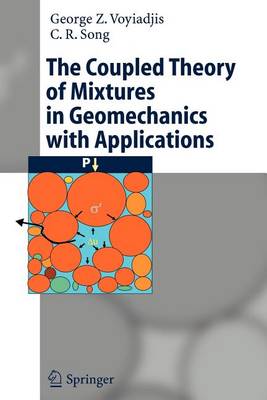Geomaterials consist of a mixture of solid particles and void space that may be ?lled with ?uid and gas. The solid particles may be di?erent in sizes, shapes, and behavior; and the pore liquid may have various physical and chemical properties. Hence, physical, chemical or electrical interaction - tween the solid particles and pore ?uid or gas may take place. Therefore, the geomaterials in general must be considered a mixture or a multiphase material whose state is described by physical quantities in each phase. The stresses carried by the solid skeleton are typically termed "e?ective stress" while the stresses carried by the pore liquid are termed "pore pressure. " The summation of the e?ective stress and pore pressure is termed "total stress" (Terzaghi, 1943). For a free drainage condition or completely undrained c- dition, the pore pressure change is zero or depends only on the initial stress condition; it does not depend on the skeleton response to external forces. Therefore, a single phase description of soil behavior is adequate. For an intermediate condition, however, some ?ow (pore pressure leak) may take place while the force is applied and the skeleton is under deformation. Due to the leak of pore pressure, the pore pressure changes with time, and the e?ective stress changes and the skeleton deforms with time accordingly. The solution of this intermediate condition, therefore, requires a multi-phase c- tinuum formulations that may address the interaction of solid skeleton and pore liquid interaction.
- ISBN10 3540808450
- ISBN13 9783540808459
- Publish Date 31 August 2008 (first published 1 January 2006)
- Publish Status Withdrawn
- Out of Print 18 October 2014
- Publish Country US
- Imprint Springer
- Format Paperback (US Trade)
- Pages 452
- Language English
